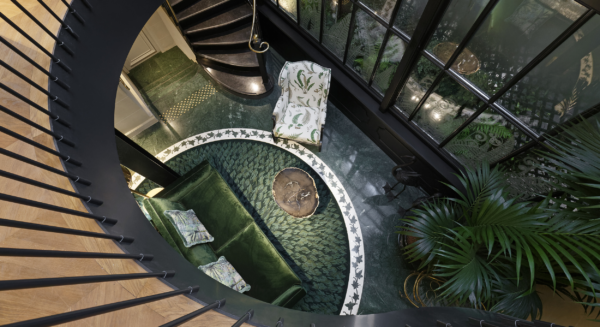“Luxury Houses can truly speak from the heart in their boutiques”
At the helm of consultancy firm MADnetwork, which she co-founded, Delphine Vitry identifies and analyses changes in the luxury industry. For the last decade, she has been using an omnichannel approach to help Houses shape their customer experience. Read on as she unpicks today’s main trends in luxury boutique design for Luxury Highlights.

What are the big trends in Luxury today?
Delphine Vitry: Luxury is a supply market that has long been slow to include customers in its thinking. But that is changing fast for the simple reason that customers themselves are evolving, as they go digital, become more international and seize their independence. Houses should not be dictated by their clientele, but it is vital that they properly understand customers and their expectations. Among other things, this means integrating the customer experience in new boutique concepts.
The second challenge for Luxury is to harness the full potential of digital. While it is just a tool and not an end in itself, digital technology plays a fundamental role in defining the customer journey. Going a step further, Houses can gain a head start in the coming years by getting their data capture and processing right.
The third big trend is that brands today have no choice but to be environmentally, socially and societally engaged. It is crucial for people to be able to identify with – and find meaning in – a brand’s values. For this, Houses need to set out a clearly defined mission and ensure that everything lines up with this vision, both internally and externally, from hiring to determining the boutique experience.
How does this translate into boutique design?
The experience the House wants to convey should dictate design. It’s not enough to change the color of the carpet! Having the customer sit beside the sales associate, rather than across a table, for example, will impact aspects such as room configuration or table shapes. Even so, some interior design approaches are unmistakably a product of their time and bear the hallmark of their creators. A boutique takes five years to pay for itself, and you need at least a year to bring a new concept to life. This creates a certain amount of inertia. The right to make mistakes carries a hefty price tag, especially in the Luxury sector, where most transactions still take place in-store rather than online, particularly in the jewelry segment. Haute Joaillerie is something of a case apart, since a large proportion of transactions happen at events or during meetings with major buyers. But even here, the boutique still acts as a showcase for the House and its know-how.
So strategies are evolving to include more complex, more targeted retail set-ups. Modern Houses are organizing their networks around core flagship stores backed by a network of spaces that are more segmented based on audience. We are also seeing more pop-up stores, whose purpose (and hence performance indicator) varies to suit the project, which could range from testing a market to launching a product or sharing the brand universe.
How are Houses factoring in customer experience when they design boutiques?
You wouldn’t welcome a small group of tourists in the same way as you might receive a long-standing client. Houses today are organizing spaces and movement to accommodate different customer types. Even as recently as five years ago, Haute Joaillerie pieces tended to be tucked away towards the rear of the boutique. That is no longer the case. If a customer buys a €3,000 ring, they might still feel like dreaming over a diamond necklace. Someone who makes the effort to visit a store is looking for emotion. This is the idea driving the new customer experience offered by Boucheron at its Place Vendôme flagship in Paris. The aim is to cut the distance between the House and its clientele, between sales associate and customer.
Can you name some other interesting models?
Gucci’s New York boutique in Soho is a very inspiring example from a customer experience perspective. It embodies Gucci’s vision and conveys the House’s values of vitality and joy. This translates into the store layout and the journey that customers are invited to take. Dark-suited security guards are out, replaced by “connectors” who accompany guests into the Gucci universe, while a 3D projection room broadcasts brand content. In recent years, the Luxury sector has also seen a shift in language and the introduction of new services, such as concierge solutions, that echo those of the hotel industry.
Is the arrival of new generations of consumers changing the situation?
In this day and age, a 30-year-old man from China and a young New Yorker or Parisian with equivalent purchasing power will have more in common than that same Chinese person and his grandfather. Yet while young people are more connected than their elders, Houses still have to build customer loyalty to grow sustainably. And loyalty is gained primarily in-store through a physical connection. A purchase is a special moment, a magical time out of time when an attentive salesperson takes care of you. It is still in-store – not online – that a House can truly speak from the heart. Boucheron puts this lesson into practice in its Paris boutique at 26, Place Vendôme.


